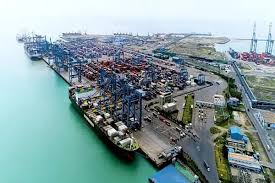GS3 – Infrastructure

Context:
The Lok Sabha has passed the Indian Ports Bill, 2025, aimed at modernising port governance, strengthening environmental safeguards, and replacing the Indian Ports Act, 1908.
Key Features:
Regulatory Framework and Institutional Setup:
- Maritime Council: Establishes the Maritime State Development Council chaired by the Union Ports Minister to advise on national port policy, data transparency, and tariff matters.
- State Maritime Boards: Granted statutory recognition to manage non-major ports, including infrastructure planning, licensing, tariff-setting, and compliance.
- Dispute Resolution Committees (DRC): State-level committees to handle non-major port disputes; civil courts excluded, with appeals directed to respective High Courts.
Management and Operational Control:
- Conservators: Appointed by states to supervise and regulate port operations, including vessel movement, disease control, and penalty enforcement.
- Harbour Masters & Health Officers: Function under conservators’ supervision.
- Tariff Setting: Major port tariffs fixed by authority boards; non-major ports tariffs set by boards or concessionaires.
Environmental Safeguards and Safety:
- Compliance with MARPOL and Ballast Water Management Convention.
- Ports must maintain pollution control and waste reception plans; central audits ensure compliance.
- New offences include pollution non-reporting, unauthorised operations, and DRC order violations.
Strategic Development:
- Centre can notify new ports or redefine port limits after state consultation.
- Criteria for designating mega ports may be specified.
- Encourages integration of ports with inland waterways and multimodal transport networks.




